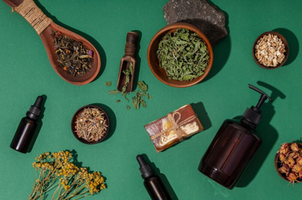
What exactly is monkeypox? Why is this making headlines around the world? Is this another reason to be concerned? And even what precisely do we know about this disease? Everything we now know, you will also know. Monkeypox is a viral infection caused by the Monkeypox virus, which can be passed from animals to humans as well as from infected humans to humans. It has symptoms that are very similar to smallpox, but are less severe. Monkeypox was previously known to infect those living near tropical rainforests in West and Central Africa, but it has now spread to urban areas. Non-human primates (monkeys) and rodents are the most common carriers.
Over 100 cases have been reported in 12 countries worldwide. The rise in reported cases across different countries is concerning, and WHO has emphasized the importance of monitoring and surveillance of the spread of monkeypox across the globe as well.
Symptoms of Monkeypox
The incubation period (the time between becoming infected and showing symptoms) is typically 7 to 14 days, but it can range from 5 to 21 days. Monkeypox symptoms can be divided into two categories:
- Invasion period: This period lasts between 0 and 5 days and is characterized by fever with or without chills along with headache, lymph node enlargement, Muscle pain, Backache and extreme vulnerability.
Monkeypox is distinguished by swollen lymph nodes, as the initial symptoms are similar to chickenpox, smallpox, and measles.
2. The second time period: This period begins between 1-3 days of fever and the appearance of skin eruptions. The rashes appear first on the face and then spread downward across the face and hands/feet. Genitalia, the cornea of the eyes, and oral mucous membranes are occasionally involved.
Rashes begin as flat red lesions (macules), then evolve into raised lesions (papules), lesions filled with clear fluid (vesicles), and lesions filled with yellow fluid (pustules). However, the lesions eventually dry up and fall off without leaving any scars.
From Ayurveda’s viewpoint:
According to Ayurveda, any kind of pox is due to the imbalance of Vata and Pitta doshas in one’s body. Along with this, overeating extremely salty, bitter, or sour foods can make your body susceptible to contract pox. The Ayurvedic treatment for pox is Vamana & Lepas.
- Vamana
Vamana therapy involves eliminating toxins and bringing harmony amongst the 3 doshas in one’s body by inducing vomiting. Vomiting will help in removing excess pitta and kapha. However, before performing Vamana, oleation and Sudation treatments are performed. Herbs like vasa, yashtimadhu, nimba, patola, and others are used in Vamana therapy
- Lepas
Lepas are masks that are applied with various herbs to provide relief from pox lesions and inflammations. Lepas are usually in semi-solid consistency and are applied to the inflamed regions. Manahshiladi lepa, karanjbijadi lepa, eladi lepa and karviradi lepa are used to treat pox lesions. Apart from lepa, brahmi, neem, and gul heena are some herbs that can be used as a paste on the body to provide soothing and moisturizing effects
- Staying hydrated
It is critical to stay nourished and eat a variety of healthy Saathvik foods to help your body fight the pox virus and recover quickly. It is important to avoid red meat and spicy food. However, staying hydrated is an equally important component of the treatment. Some hydrating beverages one can easily consume at home are plain water, coconut water, herbal tea, and electrolyte-infused beverages.
Build immunity to Prevent Monkeypox
Monkeypox spread is pretty much nascent and hence it may cause alarm in many as the information available is minimum. To prevent it, you must ensure to build immunity to the disease and maintain a balance of doshas in your body. One way you can start is Panchakarma.
Panchakarma
Panchakarma is an intervention in one’s lifestyle which deeply looks into one’s food habits, sleep patterns, stress levels, and so on to detox both mentally and physically. This is because detox enhances toxin removal and enables cells to function favorably on macro and micro levels. This involves inculcating effective procedures that are targeted to eliminate the toxins from the skin and the system. This involves incorporating dietary changes as instructed by an ayurvedic practitioner to improvise the metabolism of the patient by ensuring the food consumed is healthy, on time, and appropriate for the person’s body type and lifestyle.
At Ayurveda Living, we have ayurvedic doctors who have tremendous knowledge and hands-on expertise in helping clients across various age groups to embrace a balanced lifestyle. Click here to book your appointment now!
Note: The information in this article is intended for your educational use only and is not a substitute for professional medical advice, diagnosis, or treatment. Always seek the advice of your physician or other qualified health providers with any questions you may have regarding a medical condition and before undertaking any diet, supplement, fitness, or other health programs.





